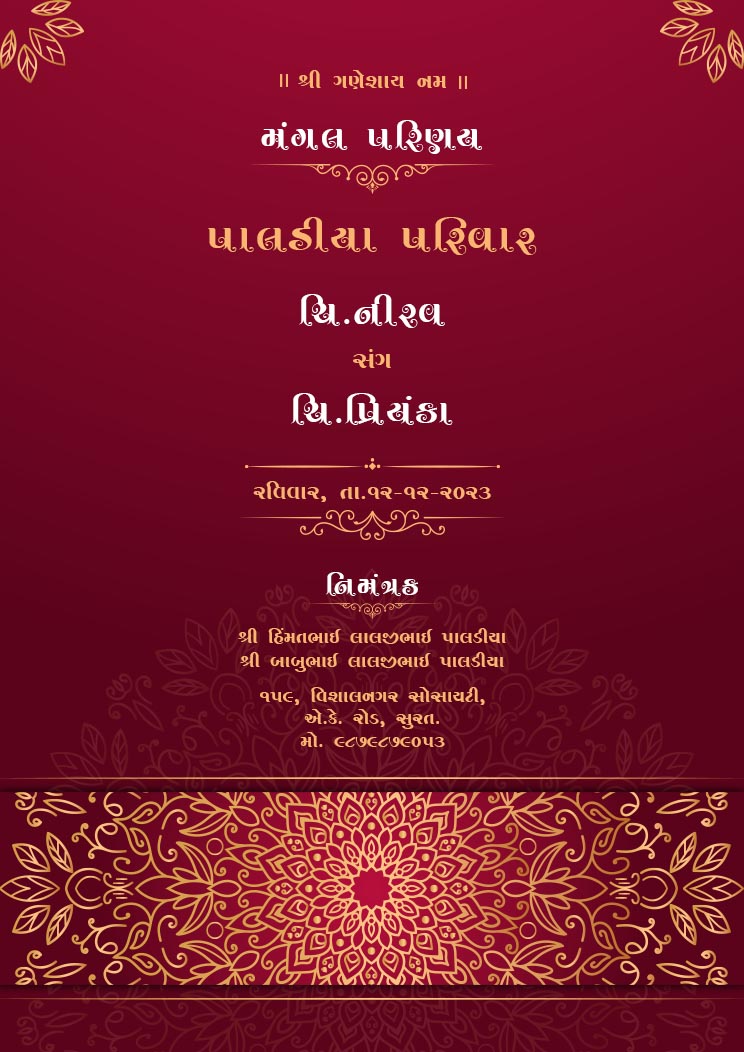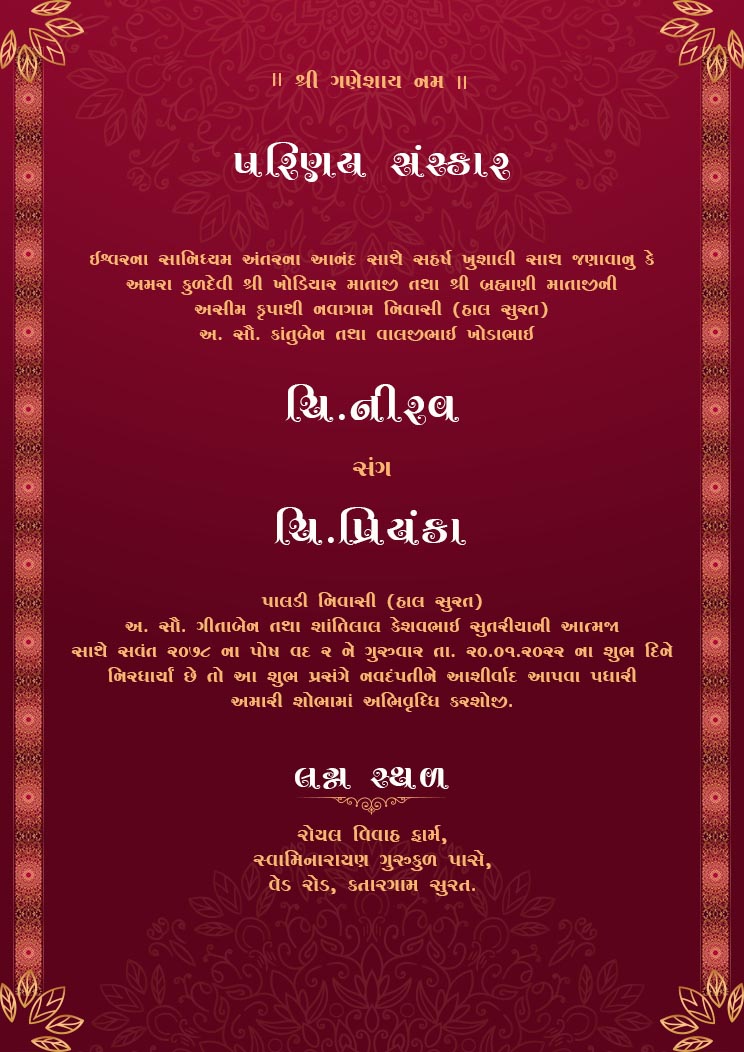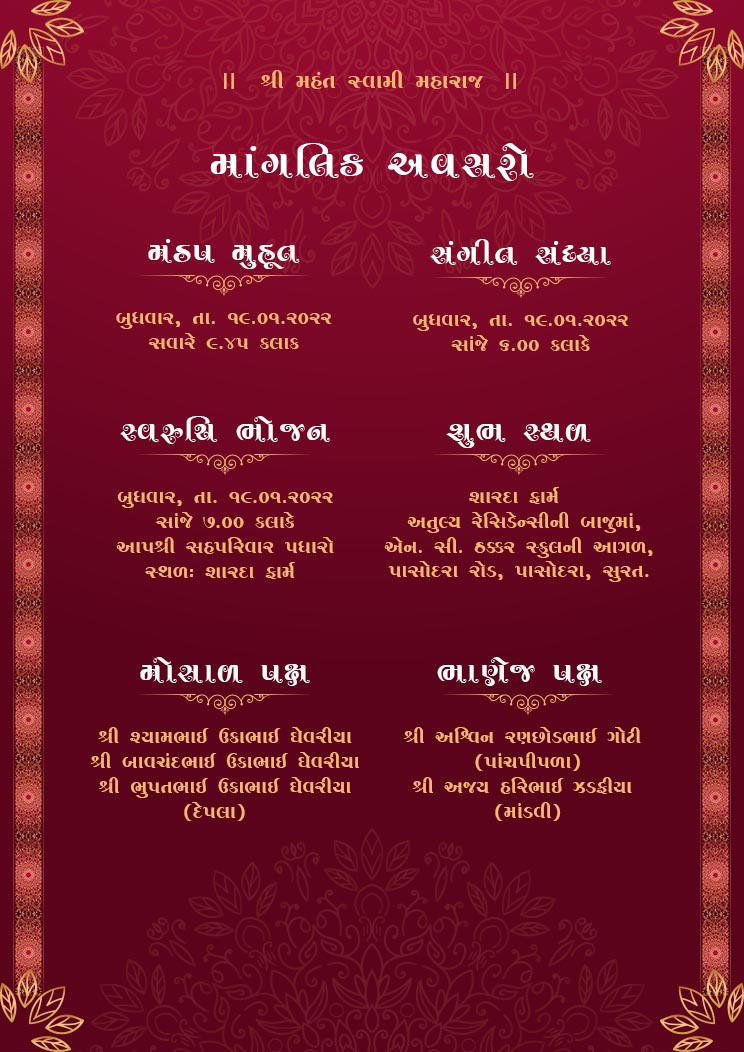When it comes to celebrating life's significant milestones, nothing speaks of tradition and elegance more than a Traditional Gujarati Kankotri. These intricately designed invitation cards not only invite guests to the event but also reflect the rich cultural heritage of Gujarat. In this comprehensive guide, we will delve into the essential elements that make a Gujarati Kankotri unique and provide tips on creating your own stunning invitations.
Understanding the Essence of a Gujarati Kankotri
A Gujarati Kankotri is much more than just an invitation card. It is a beautifully crafted piece of art that conveys the spirit of Gujarati traditions and customs. The design, colors, and motifs used in these invitations are deeply rooted in the cultural and religious practices of the region.
Key Elements of a Traditional Gujarati Kankotri
- Vibrant Colors: Traditional Gujarati invitations are known for their bright and vivid colors. Red, yellow, green, and gold are commonly used to symbolize joy, prosperity, and auspiciousness.
- Intricate Designs: The use of detailed patterns and motifs such as peacocks, elephants, and traditional floral designs is a hallmark of Gujarati Kankotris.
- Religious Symbols: Om symbols, Swastikas, and images of deities like Lord Ganesha are often incorporated to invoke blessings and convey spiritual significance.
- Traditional Wording: The language used in a Kankotri is formal and respectful, often including traditional Gujarati script and Sanskrit shlokas.
Creating Your Unique Gujarati Kankotri

Choosing the Right Paper and Material
The foundation of any great invitation is the paper. For a Gujarati Kankotri, it's essential to choose high-quality paper that can support intricate designs and vibrant colors. Handmade paper, silk, and vellum are popular choices that add a touch of luxury and authenticity.
Designing the Layout
The layout of the invitation should be well-organized and balanced. Here are some tips for designing the perfect Gujarati Kankotri:
- Front Page: This usually features the most elaborate design, often with an image of Lord Ganesha or another deity. The names of the hosts and the occasion are prominently displayed.
- Inner Pages: These pages contain the details of the event, including the date, time, venue, and a warm message to the guests. Traditional motifs and borders enhance the aesthetic appeal.
- Back Page: The back page can include additional information such as RSVP details, a map to the venue, or even a heartfelt thank-you note.
Incorporating Traditional Motifs and Symbols
To make your Gujarati Kankotri truly unique, consider incorporating traditional motifs and symbols that resonate with your family’s heritage. Peacocks, mango leaves, lotus flowers, and elephants are popular choices. These motifs can be used as borders, background patterns, or focal points within the design.
Selecting the Perfect Font
The font style and size play a crucial role in the overall look of the invitation. Traditional Gujarati script is often used for its elegance and cultural relevance. Ensure that the font is readable and complements the intricate designs of the Kankotri.

Color Schemes and Combinations
Choosing the right color scheme is vital to capturing the essence of a Traditional Gujarati Kankotri. Consider the following combinations:
- Red and Gold: Symbolizing prosperity and joy.
- Green and Yellow: Representing harmony and happiness.
- Blue and Silver: For a touch of modern elegance while maintaining traditional values.
Personalizing Your Gujarati Kankotri
Adding a Personal Touch
To make your invitation even more special, consider adding personal touches such as:
- Family Crest or Logo: Incorporate your family crest or a custom logo to add a unique identity to the invitation.
- Handwritten Notes: Including a handwritten note or message can add warmth and a personal touch.
- Photos: Adding photographs of the couple or family members can make the invitation more relatable and memorable.

Embellishments and Finishing Touches
Embellishments such as gold foil stamping, embossing, and laser-cut designs can add an extra layer of sophistication to your Gujarati Kankotri. Finishing touches like tying the invitation with a silk ribbon or sealing it with a wax seal can enhance its overall appeal.
Modern Innovations in Gujarati Kankotris
While traditional elements are crucial, incorporating modern innovations can make your Gujarati Kankotri stand out. Here are some ideas:
- Digital Invitations: Create a digital version of your Kankotri for easy sharing via email or social media. This is especially useful for reaching out to guests who are far away.
- Interactive Elements: Add QR codes that link to event websites, RSVP forms, or digital gift registries.
- Eco-Friendly Materials: Use recycled paper or plantable seed paper to make your invitations environmentally friendly.
Conclusion
Creating a Traditional Gujarati Kankotri is a beautiful way to honor your cultural heritage while inviting your loved ones to celebrate with you. By paying attention to the key elements, personalizing the design, and incorporating modern touches, you can create an invitation that is both timeless and unique.



